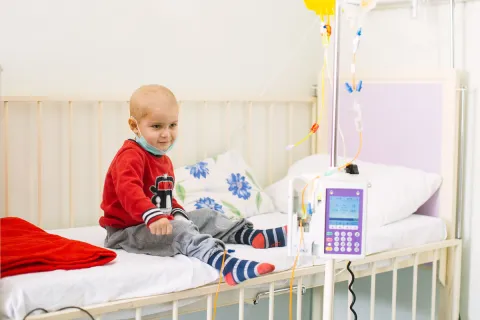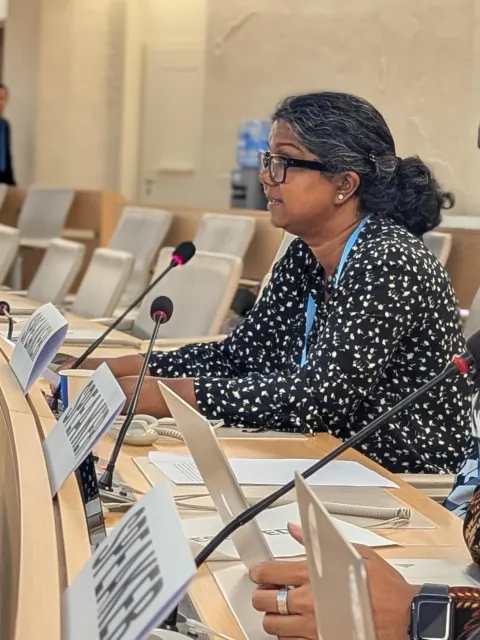Giving every child the chance to overcome cancer
World Children’s Day on 20 November is observed to promote the rights and well-being of children. This includes their right to health and access to quality treatment.

Every year, 215,000 children under the age of 15 are diagnosed with cancer and about 85,000 in the age group between 15 -19 years old, according to estimates from the International Agency for Research on Cancer (IARC).
Almost half of childhood cancers are cancers of blood cells (leukaemia and lymphoma), and the most frequent other malignancies are tumours of the central nervous system and tumours that develop from embryonal tissues. Several tumour types occur almost exclusively in children, such as neuroblastoma and retinoblastoma.
Cancer is overall rare in children. In high-income countries, it represents less than 1% of all cancers and the prognosis for these children is an 80% survival rate. However, in low-resource settings, where children may make up half of the population, the proportion of childhood cancer can be five times higher and the survival rate is only around 20% according to the World Health Organization (WHO). All too often their illnesses are not diagnosed early enough, or they are forced to abandon treatment due to high costs.
“Many cancers that affect children can be treated. However, in low- and middle-income countries this is not always the case. More can and should be done to improve early diagnosis and access to quality treatment”. – Sonali Johnson, UICC Head of Knowledge, Advocacy and Policy.
Access to the right medication is one of the key determinants of cancer survival. While the WHO Model List of essential medicines for children includes medicines for childhood cancer and most of these medicines are off-patent, they are nevertheless not always available.
Inadequate production, barriers to registration, procurement practices and importation regulations are among the reasons. “It is very encouraging that many countries have made progress in this domain, yet more can be done. All countries should ensure that essential medicines for children are listed on their national Essential Medicines Lists (EML) and are publicly procured with the necessary quality assurance. Access to medicines is covered by international human rights conventions.” – Sonali Johnson, UICC Head of Knowledge, Advocacy and Policy.
To address this and other issues, UICC in collaboration with other partners offers technical assistance to countries to update, revise and develop their National Cancer Control Plans (NCCPs). UICC also works closely with the World Health Organization and is an active member of the WHO childhood cancer initiative.
In order to improve the awareness of childhood cancer and common early warning signs, UICC together with Childhood Cancer International (CCI) and the International Society of Paediatric Oncology (SIOP) produced a suite of materials for health workers. These included posters and pocket cards that were translated into many different languages and were used around the world during the Signs and Symptoms Campaign between 2014 and 2017.
The materials remain a valuable support to health workers and practitioners in health facilities, schools and communities. Organisations and health workers are welcome to use the products in the manner they consider to be most effective in their context.
Last update
Thursday 28 November 2019
